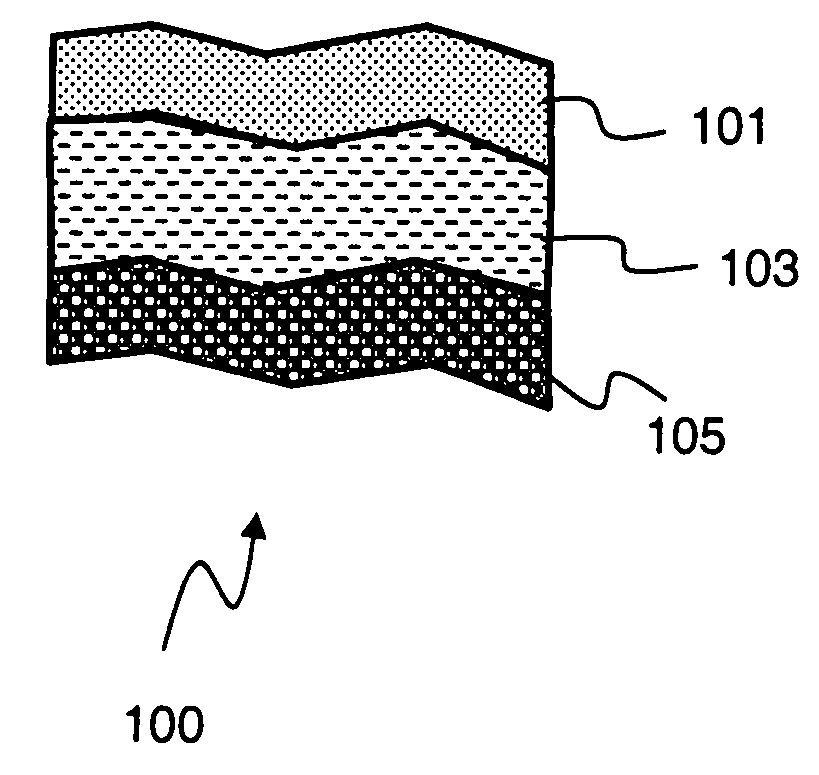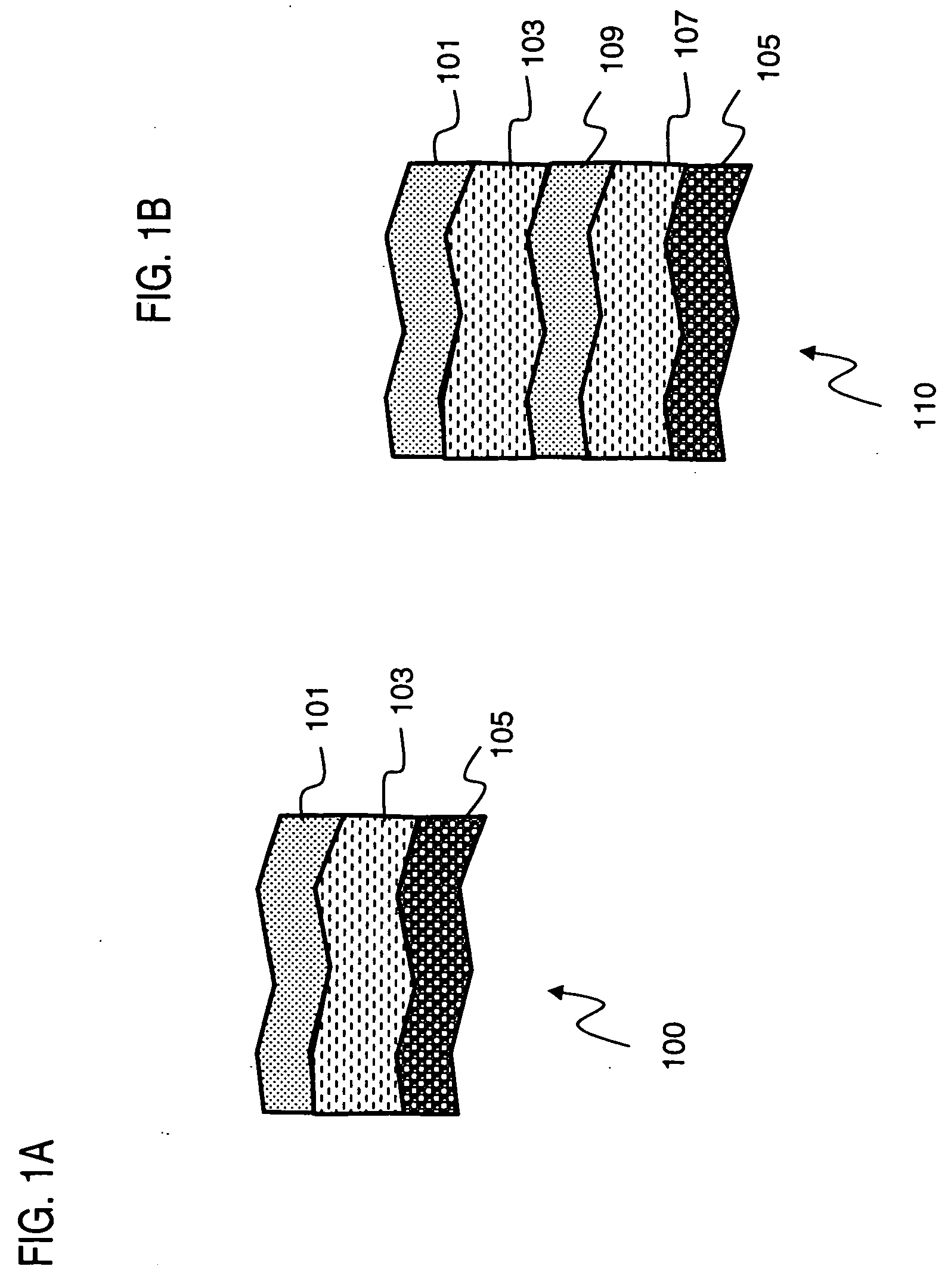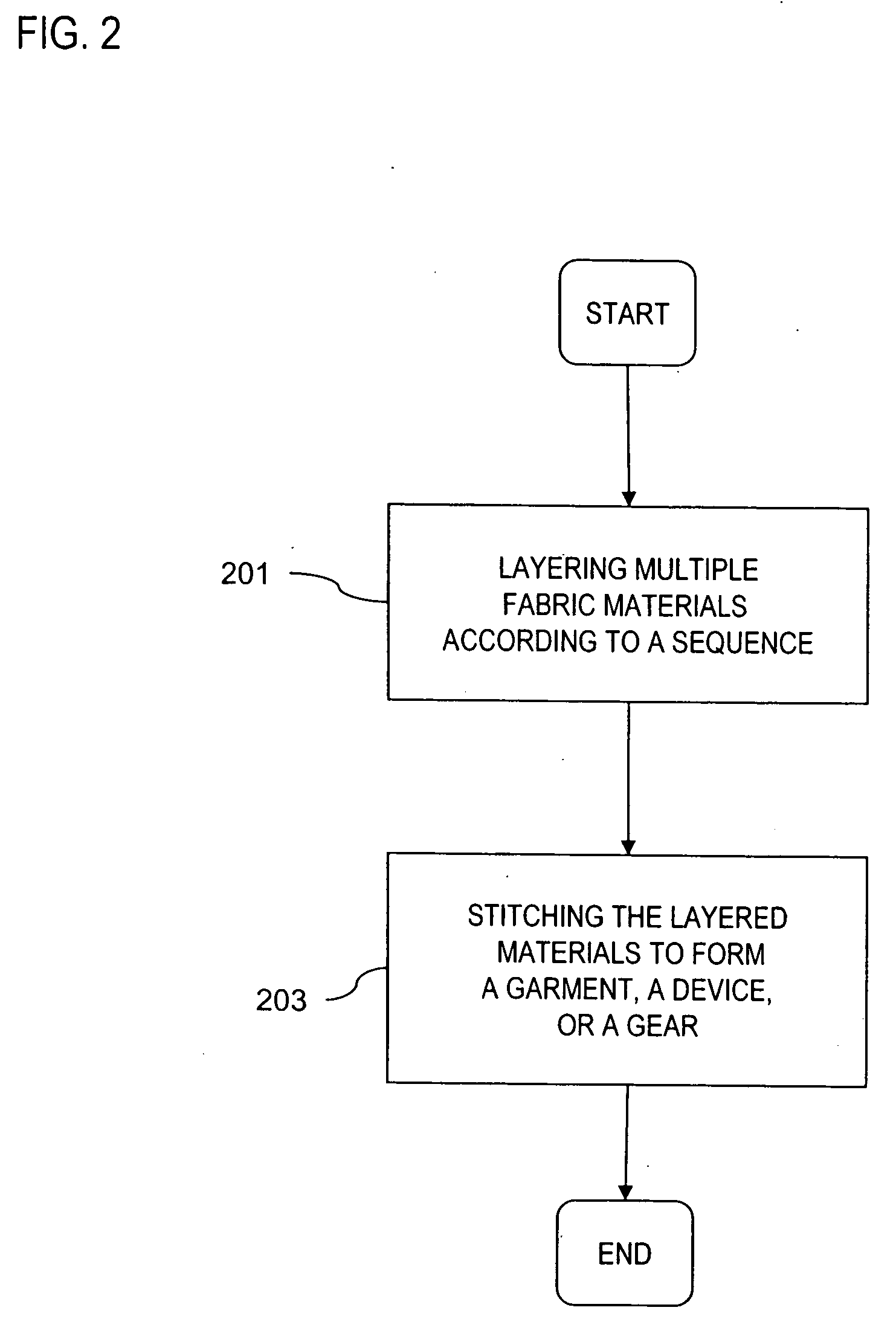Anti-osteoarthritis and anti-hypothermia garment and device
a technology of anti-osteoarthritis and anti-hypothermia, applied in the field of textile fabrics, can solve the problems of not allowing perspiration to escape, plastics are non-porous, and the material used in a wet suit does not permit wide application to other garments, so as to prevent hypothermia or alleviate conditions, relieve pain and swelling, and delay the onset of osteoarthritis.
- Summary
- Abstract
- Description
- Claims
- Application Information
AI Technical Summary
Benefits of technology
Problems solved by technology
Method used
Image
Examples
Embodiment Construction
[0027] A method and device for countering the effects of osteoarthritis and / or hypothermia are described. In the following description, for the purposes of explanation, numerous specific details are set forth in order to provide a thorough understanding of the present invention. It is apparent, however, to one skilled in the art that the present invention may be practiced without these specific details or with an equivalent arrangement. In other instances, well-known structures and devices are shown in block diagram form in order to avoid unnecessarily obscuring the present invention.
[0028]FIGS. 1A and 1B are diagrams of multilayered materials capable of providing heat retention and repelling water, in accordance with an embodiment of the present invention. As seen in FIG. 1A, a multilayered material 100, which is, flexible, and breathable, includes three layers: a water-repellent layer 101 that shields against water, a heat retentive layer 103 that exhibits high heat retention and...
PUM
| Property | Measurement | Unit |
|---|---|---|
| temperature | aaaaa | aaaaa |
| length | aaaaa | aaaaa |
| water repellent | aaaaa | aaaaa |
Abstract
Description
Claims
Application Information
 Login to View More
Login to View More - R&D
- Intellectual Property
- Life Sciences
- Materials
- Tech Scout
- Unparalleled Data Quality
- Higher Quality Content
- 60% Fewer Hallucinations
Browse by: Latest US Patents, China's latest patents, Technical Efficacy Thesaurus, Application Domain, Technology Topic, Popular Technical Reports.
© 2025 PatSnap. All rights reserved.Legal|Privacy policy|Modern Slavery Act Transparency Statement|Sitemap|About US| Contact US: help@patsnap.com



